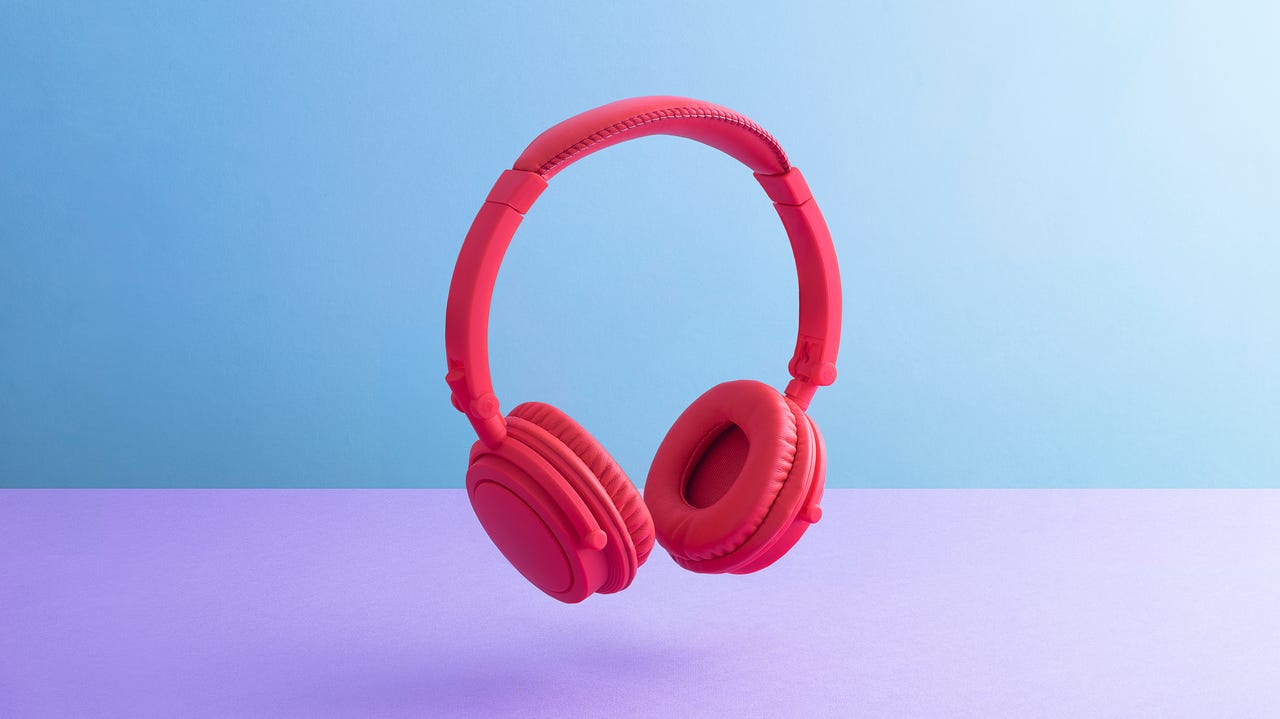'ZDNET Recommends': What exactly does it mean?
ZDNET's recommendations are based on many hours of testing, research, and comparison shopping. We gather data from the best available sources, including vendor and retailer listings as well as other relevant and independent reviews sites. And we pore over customer reviews to find out what matters to real people who already own and use the products and services we’re assessing.
When you click through from our site to a retailer and buy a product or service, we may earn affiliate commissions. This helps support our work, but does not affect what we cover or how, and it does not affect the price you pay. Neither ZDNET nor the author are compensated for these independent reviews. Indeed, we follow strict guidelines that ensure our editorial content is never influenced by advertisers.
ZDNET's editorial team writes on behalf of you, our reader. Our goal is to deliver the most accurate information and the most knowledgeable advice possible in order to help you make smarter buying decisions on tech gear and a wide array of products and services. Our editors thoroughly review and fact-check every article to ensure that our content meets the highest standards. If we have made an error or published misleading information, we will correct or clarify the article. If you see inaccuracies in our content, please report the mistake via this form.
The 5 biggest headphones trends that you'll be hearing more about in 2024


There was much to talk about this year in the consumer headphones world. From impending upgrades to noise-canceling technology and battery life to never-before-seen features like bass you can hear and feel and fully self-repairable cans, 2023's headphone releases were nothing short of features that will make your ears perk up.
Also: The best over-ear headphones: Expert tested and reviewed
More importantly, headphone companies achieved higher audio quality thanks to new Bluetooth codecs and internal components. Immersive spatial audio experiences, low latency, adaptive noise-canceling technology, high bit rates, faster wireless charging, and so much more are all themes we'll see more of from headphone companies in 2024.
See below for a look back at the most influential audio trends of 2023.
1. Low latency: Chasing a faster listening experience
Low latency describes a network's ability to process a high volume of data with minimal delay. Regarding headphones, the lower the latency, the faster the audio reaches your ears. Low latency is desirable for consumers, especially as the mobile gaming market expands. Audio companies know consumers want a pair of headphones they can wear during their daily commute, in the office, at the gym, and while gaming.
Also: Your Pixel Buds Pro are getting a major software upgrade, and it's totally free
While most consumer headphones aren't optimized for gaming, headphone makers are working towards it. For example, earlier this year, Google announced that a software upgrade would introduce low latency mode for its flagship premium earbuds, the Pixel Buds Pro. Google says the Pixel Buds Pro's low latency mode cuts latency in half. Keep in mind that this was all achieved through a software update.
2. A new era of Bluetooth: A long way from 1999
Qualcomm has been manufacturing chips for some of the most recognizable headphone brands, including Bose, Audio-Technica, Jabra, Edifier, and Anker. Naturally, the chipmaker owns several highly-adopted Bluetooth codecs, the most advanced being the Qualcomm aptX Adaptive codec.
Thanks to the technology, users can enjoy low-latency listening, and we expect the company to build on the codec in 2024. Just a few months ago, Qualcomm announced two new audio chips and platforms promising high bit-rate audio via Bluetooth connectivity. Lossless audio (CD-quality audio) is currently unachievable over a Bluetooth connection. Bluetooth cannot transmit data at the appropriate speeds for lossless playback. However, Qualcomm says its S7 Pro audio platform will equip your headphones with Wi-Fi, and lossless listening can occur without wires.
Also: How Qualcomm's new audio tech could transform your wireless earbud experience
Last year, Bluetooth SIG, the association that oversees Bluetooth protocols, announced a new set of specifications that define a new audio technology: LE Audio.
LE Audio operates on the Bluetooth Low Energy radio and includes a new codec called LC3. LC3 promises high-quality audio streaming and lower power consumption. LE Audio also introduced a new feature called Auracast, which allows one audio source to broadcast to unlimited devices. For example, multiple smartphones can connect to one Bluetooth speaker and simultaneously stream audio.
Also: Bluetooth SIG's certification of LE Audio means big things are coming to wireless sound
Expect more consumer audio companies to equip their Bluetooth speakers with Auracast, allowing multiple speakers to stream audio from one device and decreasing the need to buy one bulky speaker to get the party going.
3. Solid-state drivers
Drivers are the tiny speakers inside a pair of headphones, often made of metal and magnets as air moves through them to produce the sounds you hear. The better and well-put the material, the better the sound.
There haven't been many changes to headphone drivers for decades regarding the physics behind their output, but changes are coming, as a California-based startup, xMEMS, uses silicon-based drivers to increase audio clarity and can be used in headphones, in-ear monitors, digital hearing aids, smart glasses, and VR headsets.
Also: I tested the first wireless earbuds with xMEMs drivers, and they've set a new standard for me
xMEMS drivers use silicon to replace the paper or plastic diaphragm found in traditional drivers. The solid-state silicon drivers should improve noise-canceling and spatial audio, and their dust and water resistance is rated IP58 -- ideal in fitness and outdoor settings. Expect to see more adoption next year.
4. Spatial audio
Spatial audio is a relatively new technology for consumer headphones, with Sony launching 360 Reality Audio only a few years ago. In response, Apple released its Spatial Audio feature in 2020, and gaming headphone manufacturers have since popularized the technology to provide the most immersive entertainment experiences.
To take advantage of the technology, you'll need a compatible pair of headphones and a music streaming platform like Apple Music and Tidal. However, this year, Bose changed the game. Bose's take on spatial audio, Immersive Audio, debuted with the new line of QuietComfort Ultra headphones and earbuds.
Also: Bose QuietComfort Ultra review: A rightful heir to the ANC throne
With the new models, you no longer need a compatible streaming service to experience the spatial audio-like sound, which we tested and found to be true. Still, improvements to spatial audio technology will revolutionize the consumer headphones market and continue to flourish as more companies venture into the virtual reality world, as seen with the Apple Vision Pro and the Meta Quest 3.
5. Qi2 charging for headphones
Wireless charging is becoming a cornerstone of modern technology. In our quest to go truly cordless, we've found solace in wireless charging stands, pads, and car mounts.
In January of this year, the Wireless Power Consortium (WPC) announced a new wireless charging standard, Qi2. By leveraging Apple's MagSafe charging, the new wireless charging standard introduced faster charging speeds to all compatible devices, including Android phones.
Also: Faster wireless charging coming soon to more Android phones, thanks to Apple's MagSafe
Some Qi2-enabled charging accessories are available now, and all iPhone 13, 14, and 15 models are compatible with Qi2. In the near future, wireless earbuds will be compatible with Qi2, meaning your Apple, Sony, Google, Bose, and Samsung earbuds won't need to stay on the charging pad for as long.
2024 and beyond
It's thrilling to dissect the audio technologies that defined 2023. From optimizing Bluetooth codecs to the increasing complexity of AI-powered noise-cancellation, 2024 is shaping up to be a promising year for headphones, wireless earbuds, and so much more. Stay tuned, as ZDNET will be at the forefront of the latest innovations, analyzing, testing, and sharing what's new on the scene, starting with CES.
Until then, read more about ZDNET's favorite 2023 headphone releases -- and why they made the list.
- Aurvana Ace 2 earbuds: The best earbuds for forward-thinking audiophiles
- Beats Studio Pro headphones: The best headphones for users in various ecosystems
- Bose QuietComfort Ultra headphones: The best noise-canceling headphones
- Bose QuietComfort Ultra earbuds: The best earbuds for people who challenge the status quo
- Sennheiser Accentum headphones: The best headphones for audiophiles on a budget
- Skullcandy Crusher ANC 2 headphones: The best headphones for bass lovers
- Sony WF-1000XM5 earbuds: The best noise-canceling earbuds